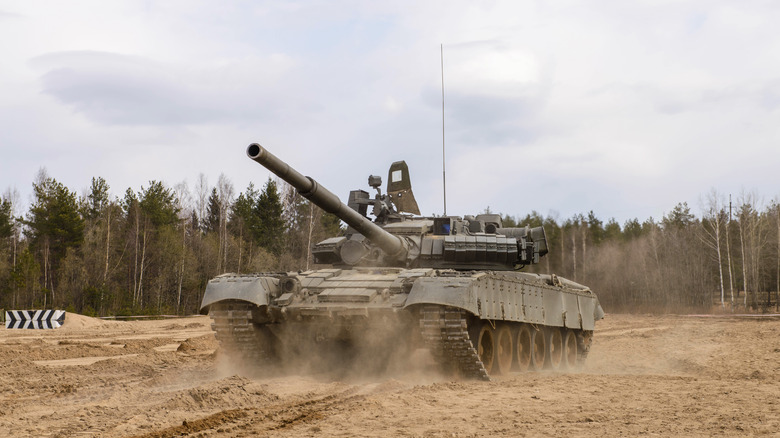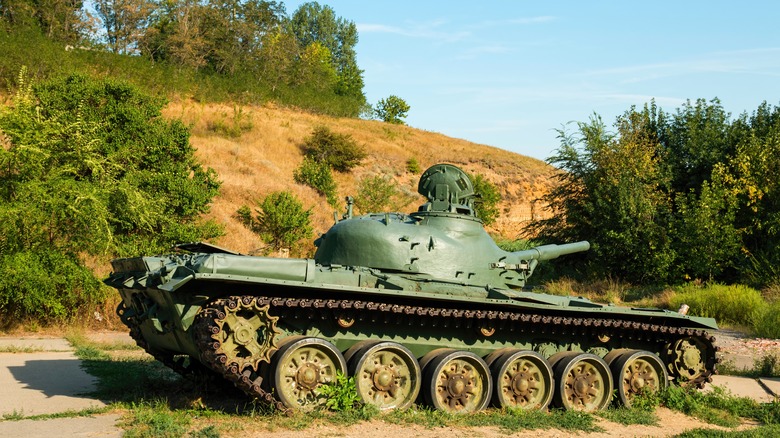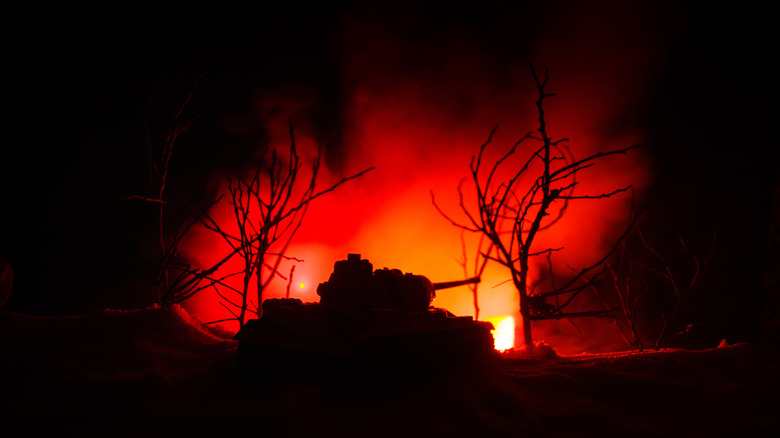Everything To Know About Soviet T-72 Tanks
In terms of ground-vehicle warfare, the Soviet-developed T-72 tank is one of the most recognized as it's seen extensive combat over the years. Devised during the Cold War, this tank featured a new look that set it apart from earlier tank designs, which were much taller. For example, the T-72 main battle tank was only 86.2 inches high, whereas the earlier U.S. M60 Patton tank sat over 128 inches high. The T-72 was lower to the ground due in part to technological advances such as the auto-loading system, which replaced a human crew member.
Launched in 1973, the T-72 was a product of typical Soviet engineering of the time, which approached new projects cautiously and rarely ventured outside the box regarding design. According to Military Today, the Soviet Union made 17,831 T-72 models by 1990, and 2,034 were still on duty with the Russian Army as of 2020. Produced in multiple countries and present in dozens of armed forces around the globe, the T-72 has had a lasting impact on the battlefield. When looking at the T-72 versus the M1 Abrams, you can compare the different approaches America took in its answer to the T-72.
T-72 could take hits and keep going
A tank with powerful weapons isn't useful if its hull is fragile and vulnerable to enemy fire. However, if you add too much armor, the tank will lose maneuverability and speed. Soviet engineers struck an optimal balance, with the T-72 building off the previously made T-64 tank. The front steel armor on the T-72 was over 400 millimeters thick and could survive both shoulder-mounted and fixed anti-tank missiles.
One of the potential dangers during the Cold War was nuclear, biological, and chemical weapons. What if the three-person crew was hit with a toxic gas, radiation, or other unseen attacks? Fortunately, the T-72 was equipped with robust anti-NBC (nuclear, biological, and chemical) technology that included radiation protection and automatic fire suppression. With more than adequate armor surrounding the tank and turret and extra measures against warfare's nastiest options, the T-72 held its ground well.
It couldn't see well in the dark
One of the most paramount goals of any military force, when faced against another, is figuring out how to gain an advantage. Equipment that could keep troops fighting in bad weather and through the night was a significant blow to an enemy without such capability. The first models of the T-72 came equipped with an infrared searchlight, but Western tanks already had superior technology that immediately put the T-72 at a disadvantage in low-light conditions.
Despite lacking cutting-edge night vision capabilities, the T-72 featured upwards of 20 variants that were exported to several countries. Some alternate models of the T-72 offered more stripped-down versions of the tank, while others provided upgrades to performance, protection, and weapon systems. You can gain an even better understanding of this Cold War-era rolling weapon when comparing the Soviet Union's T-72 with the T-80.


